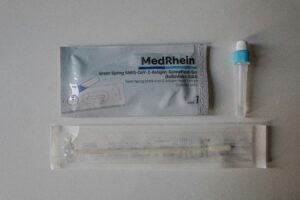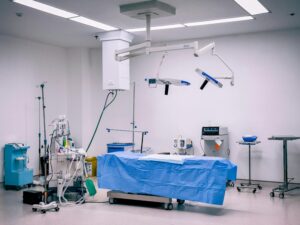FDA audit prep is crucial for manufacturing lines to maintain regulatory compliance and avoid costly delays. Therefore, here are the key areas that audits focus on, along with steps to prepare for meeting the audit requirements.
Understanding FDA Audit Priorities
Knowing the priorities of inspectors is crucial for preparing adequately for an FDA audit. The Food and Drug Administration establishes strict standards for certifying safety, efficacy, and compliance with Good Manufacturing Practices (GMPs).
Below, we delve into the aspects to consider in anticipation of an inspection by the regulatory body for the manufacture of medical devices:
Cleanroom production
These enclosures are crucial in preventing contamination from particles, microbes, and other environmental factors during the manufacturing of healthcare tools. In this case, the FDA evaluates the conformity of cleanrooms to ISO Class 7 or 8 standards, in terms of permissible particle counts.
In this regard, inspectors focus their attention on the areas detailed below:
- Airflow and pressure differentials. They verify directional airflow in specific zones, as well as the pressure differential between adjacent rooms and the number of air changes per hour.
- HEPA filtration efficiency. Inspectors ensure that filters are leak-free and that replacement schedules have been followed.
- Locker room and staff hygiene protocols. They corroborate respect for locker room measures, team teaching records, and fulfilment of behavioral principles.
- Environmental supervising records. Authorities count viable and non-viable particles and tend to study them to detect deviations.
We also support maintaining a real-time checking system for circumstances outside the guidelines, allowing examiners to retrieve the data easily. real-time checking system for circumstances outside the guidelines, allowing examiners to retrieve the data easily.
Sterilization processes
Regarding cleansing, the FDA verifies each authentication trace to ensure reliable microbial kill amounts. The inspectors require care in the next:
- Validation of the sterilization method. These entail validation protocols (IQ/OQ/PQ) to prove the Sterility Assurance Level (SAL) of 10⁶.
- Biological indicator (BI) testing and kill time studies to ratify sterilization efficiency.
- Routine detection and documentation of the cleansing cycle to confirm each lot meets sterility requests.
Additionally, we recommend using automated monitoring and sterilization systems that confirm deviations instantly and include system information.
Assembly line controls
The FDA requires business owners to prove that they control and document the fabrication process. The next are the key zones FDA agents review on company assembly lines:
- Gear calibration and maintenance records, including certificates of authentication for torque wrenches, scales, and visualization systems.
- Operator training records through the implementation of preparation and performance evaluation programs.
- Defect and Corrective Action Tracking (CAPA) through Reports of Non-Compliance (RCOs), root cause analysis, and verification of the effectiveness of corrective actions.
Likewise, the application of statistical control enables the detection of trends before errors occur and serves as preparation for FDA audits.
Cleanroom and Environmental Controls that Make the Difference
Strict cleanroom compliance is a requirement to prevent contamination during the production of medical equipment. Therefore, a health device manufacturer must guarantee obedience with each of the following standards:
- ISO Class 7/8. This guideline requires maintaining controlled particle levels in these rooms by ISO 14644-1. The company must implement rigorous clothing procedures to reduce human-borne contaminants significantly.
- HEPA filtration and airflow management. The manufacturer shall declare the use of high-efficiency particulate air (HEPA) filters capable of removing 99.97% of particles greater than or equal to 0.3 microns. They shall also observe pressure differential to ensure there is no cross-contamination between sterile zones.
- Continuous environmental monitoring. It is crucial to utilize sensors for temperature, humidity, and particle count, as well as for detecting contamination through regular microbial sampling.
Each of these measures is not only proper for FDA audit prep but also aids in obtaining a quality and safe product for patients.
Validated Manufacturing Processes: IQ, OQ, PQ Protocols
All companies that manufacture pharmaceuticals and medical devices must comply with Current Good Manufacturing Practices (cGMP) principles. Therefore, they must implement the following validation protocols as fundamental requirements for final approval:
Installation Qualification (IQ)
The critical elements that the manufacturer must address as part of this validation area are the following:
- All the documentation of the installation.
- Verifications to ensure that the equipment model and version are correct.
- Warranties of the compliance of the installation with temperature, humidity, clean area arrangement, and other duties.
- Validation of construction materials well-suited to the product.
- Certification that there is no cross-contamination or mixing hazard.
Additionally, it is a responsibility to have the approved signatures of the personnel assigned to perform the installation.
Operational Qualification (OQ)
A lot of tests aid in establishing this kind of obligation, which includes the following:
- Range examinations that regulate procedures within minimum and maximum bounds
- Challenge tests with fault imitation (power failure, unexpected reset)
- Confirmation of alarms and protection schemes
- Proof of human-machine interfaces (HMI) and controls
- Repeatability test
- Records of nonconformities and corrective events
The purpose of each of these tests is to ensure that the system can operate under real conditions and within established limits.
Performance Qualification (PQ)
Below, we will outline the advanced considerations for this qualification for device manufacturing in the USA:
- Statistically noteworthy sampling
- Validation in real-life manufacturing circumstances
- Use of real resources or accepted equivalents
- Incessant observing of critical parameters (CPP) and quality attributes (CQA)
- Documentation of usual procedure variability
At RexMed, we adhere to all these protocols to ensure compliance with FDA guidelines and confirm that our medical devices are suitable for use. This is because the implementation of IQ/OQ/PQ and a comprehensive quality control scheme is crucial to demonstrating process control.
In-Process Controls that Reinforce FDA Readiness
As part of the FDA audit prep process, In-Process Controls (IPC) are critical to ensuring quality and regulatory compliance. A sturdy IPC certificate ensures the detection and refinement of abnormalities before fabrication, thereby decreasing audit risk.
Inline Inspection Procedures
Several technologies are fundamental to achieving review events that confirm regulatory compliance and the worth of products. For example, Automated Optical Inspection (AOI) systems benefit from being able to perceive physical flaws in each element.
Likewise, dimensional verification ensures that all medical devices meet critical tolerance points for safe use. Inline sensors also regulate the proper physical and chemical features of each component or piece of equipment.
Added to all this is the exact documentation of calibration and upkeep protocols for inspection gear.
Statistical Process Control (SPC)
The operational implementation of these controls comprises aspects such as Critical Parameter Selection (CPP), counting temperature, pressure, speed, mixing time, and more. They also include control charts and Automated Alert Systems for mechanical shutdowns.
Moreover, the FDA requires documentation from SPCs that includes validation of statistical models, recorded corrective actions, and periodic review of each process.
Batch Record Review
Essential elements for preparing for FDA audits and guaranteeing fulfilment of present guidelines include the following:
- Complete, real-time documentation (eBR – Electronic Batch Records)
- Deviation management
- Corrective actions verified before batch release
- Verification of the execution of each IPC
- Confirmation of product compliance with specifications (COA – Certificate of Analysis).
Process controls ensure FDA compliance, operational efficiency, and reduced costs due to reprocessing or rejection.
RexMed’s Strength in Documentation and Validation Practices
The FDA audit prep requires addressing every aspect, from ensuring proper conditions to validating all manufacturing processes. However, constant preparation should not only address these examinations but also foster a culture of excellence to protect patient health and ensure regulatory compliance. At RexMed, we understand that well-organized validation protocols and documentation are essential for achieving success in FDA inspections. That is why we conduct a structured and rigorous evaluation of the records for each procedure to ensure full compliance with protocols.






